Renpho AI Smart Bike
Two-minute review
The Renpho AI Smart Bike is designed to offer an indoor bike experience that doesn't require an additional subscription, whether you’re looking to get fit or you want to work on building those cycling legs. On the whole, it does a good job, but you'll have to make some compromises on the hardware and software front.
It’s a space-friendly setup that’s easy to get up and running, and offers adjustments in the right places to make sure you can enjoy a comfortable ride. You don’t get a built-in display though, so you’re relying on your own phone or tablet, and it’s slightly annoying that there isn’t a spot to drop a water bottle anywhere either as things start to get sweaty.
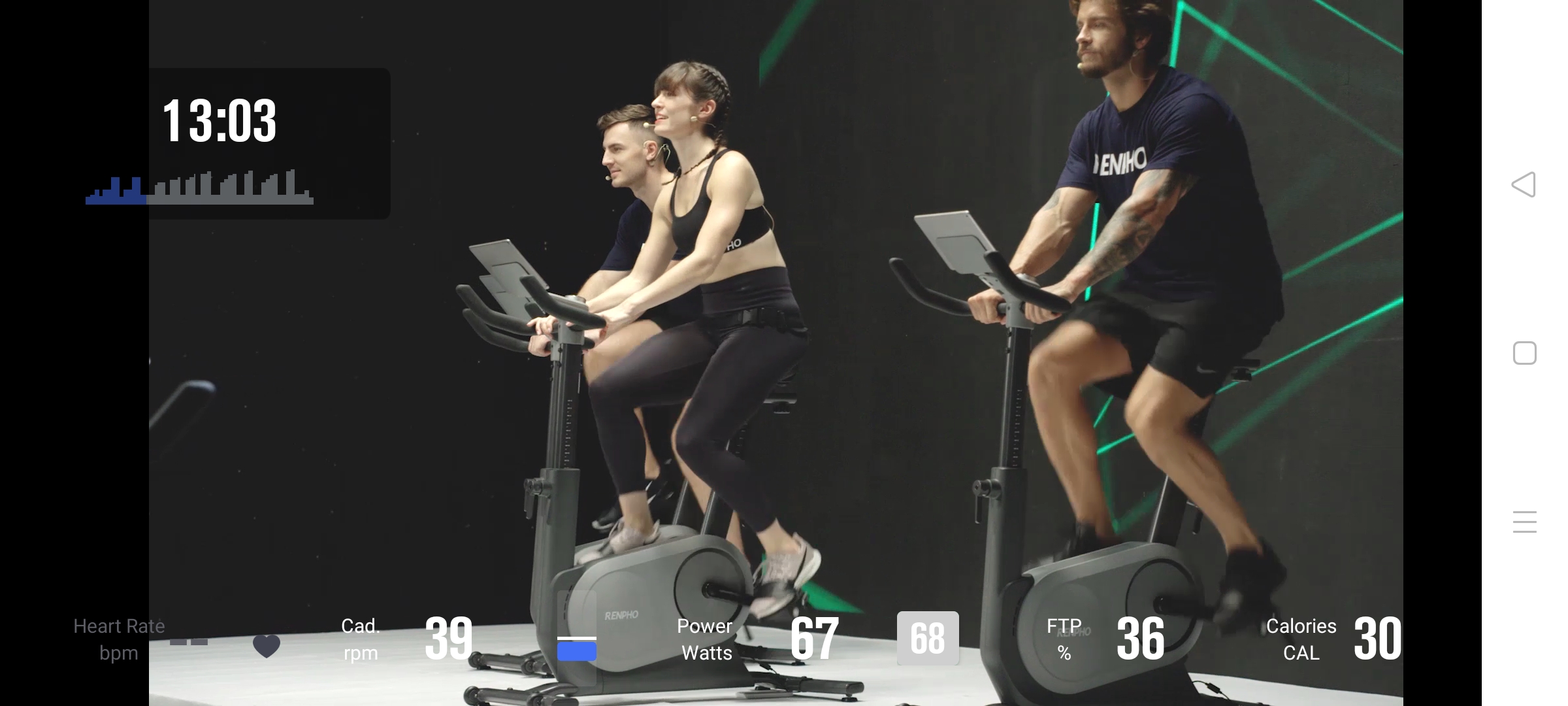
Renpho’s companion app isn’t the most polished either, but does offer just enough in the way of classes and training programs to make sure you can put it to good use and it’s well suited to beginner riders who want the scope to dial things up on the challenging front. The real appeal here is that outside of that app, the Renpho AI Bike works with other popular apps including Zwift, which isn’t something you can say about a lot of smart bikes at around this price.
If you can live with that not-so-pretty look, and you like the option of being able to connect it to other platforms to vary your workout time, then there’s plenty to like about the Renpho AI Smart Bike.
Price and availability
The Renpho AI Smart Bike launched in 2020, and is available now for $599 / £699 (about AU$800) direct from Renpho.
For comparison Peloton's exercise bikes start at $1,895 / £1,750 / AU$2,295, while the Wattbike Atom costs £1,999 (about $2,700 / AU$3,700). These are quite different bikes, however, so it's worth reading up on all three rather than making your decision based on price alone.
Design
With the Renpho AI Smart Bike, you’re definitely getting something that veers more towards that traditional bike look as opposed to rivalling a Peloton or a Wattbike in the design department. Granted, you’re paying a lot less for it, but it’s by no means the sleekest looking setup we’ve had to put to the test.
Its carbon steel frame at least isn’t a hulking one at least, and won't dominate a room. It’s a really nice and easy bike to set up too, even if you're doing so alone. Put aside 20-30 minutes and you should have everything in place to get on that bike and start riding.
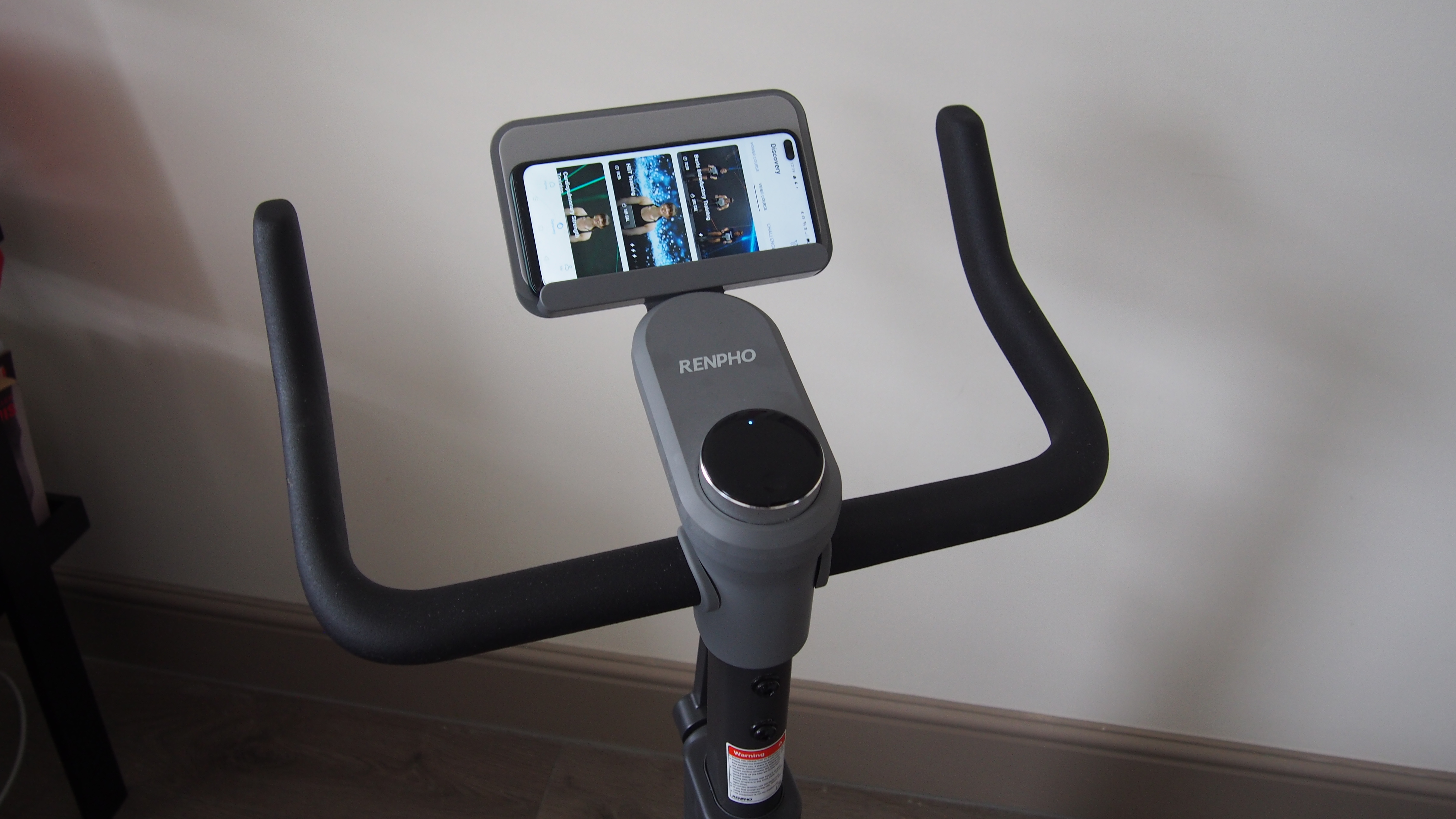
You’ll need to attach the front stabilizer and replaceable pedals, and plug in the internal power cord inside of the handlebars. There’s a small bundle of screws and wrenches included in the box to help you do that.
You need to make sure it’s positioned close to a plug socket and it’s slightly annoying the adapter cable isn’t the longest, so you may want to grab an extension lead if you want to place it much further away. There are wheels up front to make it easier to maneuver, and thankfully isn’t the heaviest bike to move around.
You can tinker with handlebar and seat height, as well as seat depth to make sure you get the most accommodating setup. We found that it paid to spend some time playing around with these adjustments, as our legs initially had a habit of hitting the handlebars when riding out of the seat.
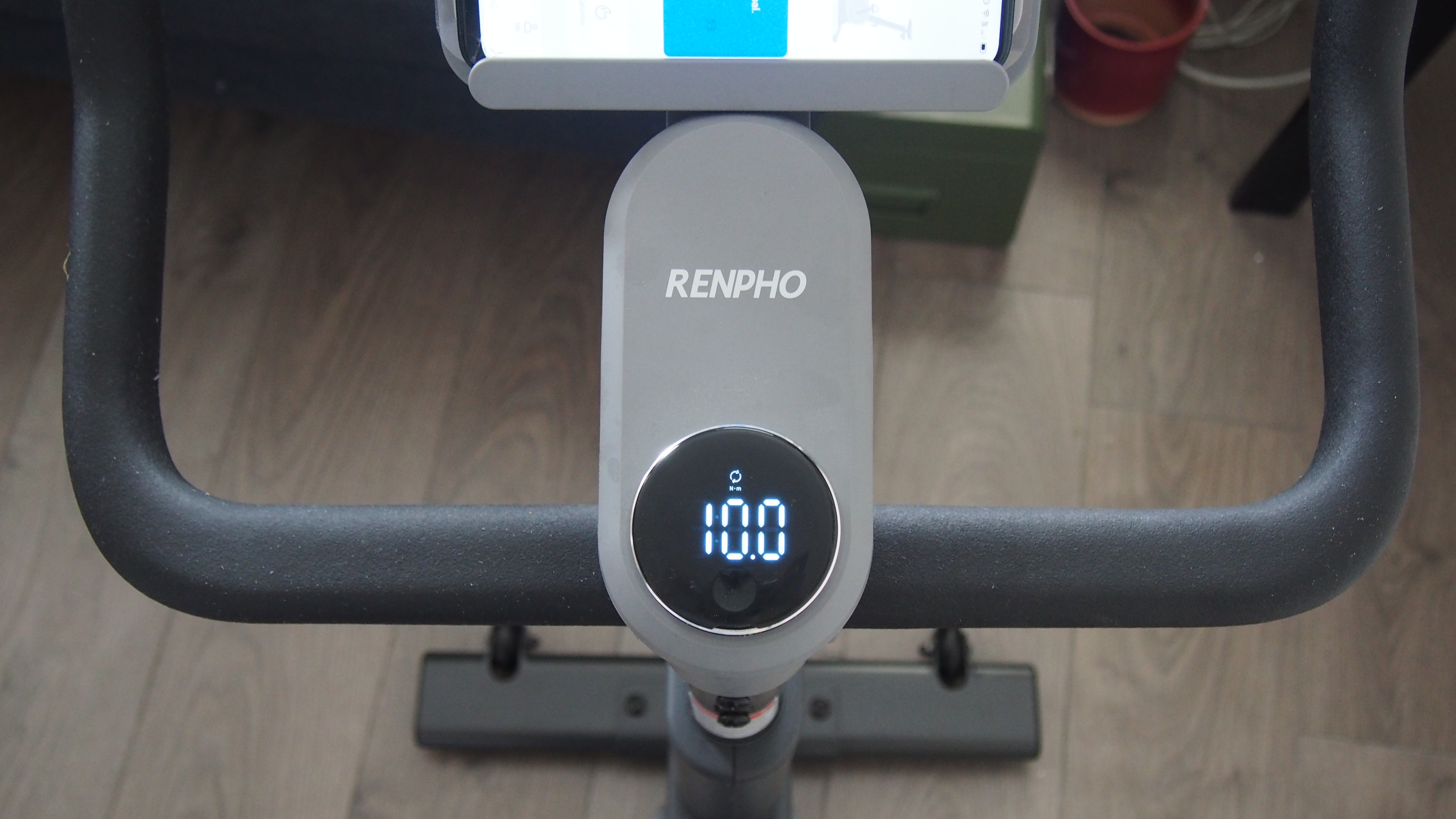
At the front of the bike you won’t find a built-in display. Instead, you’re met with a pretty simple pad holder to drop your smartphone or tablet onto that did thankfully keep our device securely in place even during more energetic rides. There’s also the nice touch of a USB port that sits a little further down the frame, which means you can keep your phone or tablet charged as you work out.
Below the holder is the circular console, which is essentially a round metal button that you can rotate to scroll through different metrics (RPM, power, cadence and calories), and adjust resistance.
Renpho uses a smart motor damping resistance system to offer automatic and manual resistance controls, which it says is smooth and offers real-time power calculations with an accuracy of more than 90%. It’s a system that operates pretty quietly, which is ideal if you’re worried about making a racket for early morning or late evening sessions.
Ultimately, it’s a bike that keeps things simple and if you’re daunted by the prospect of having to spend a long time getting things set up, that’s not something you really need to worry about here.

Setup and performance
While you can use the bike manually, you’ll get the most out of it when you take advantage of its connected smarts. Once it’s plugged in, you’ll need to use the console up front to pair the bike to the Renpho AI Gym app (Android and iOS) over Bluetooth. Despite some initial connectivity issues, we didn’t have major problems pairing it up with the Android or iOS apps we tested it with. The app experience across those platforms is pretty consistent too, which is good to see.
That AI Gym app, it's fair to say, isn't the most polished, but does offer pretty much what you’d expect to see from a companion app. You don’t have to pay to access it, either.
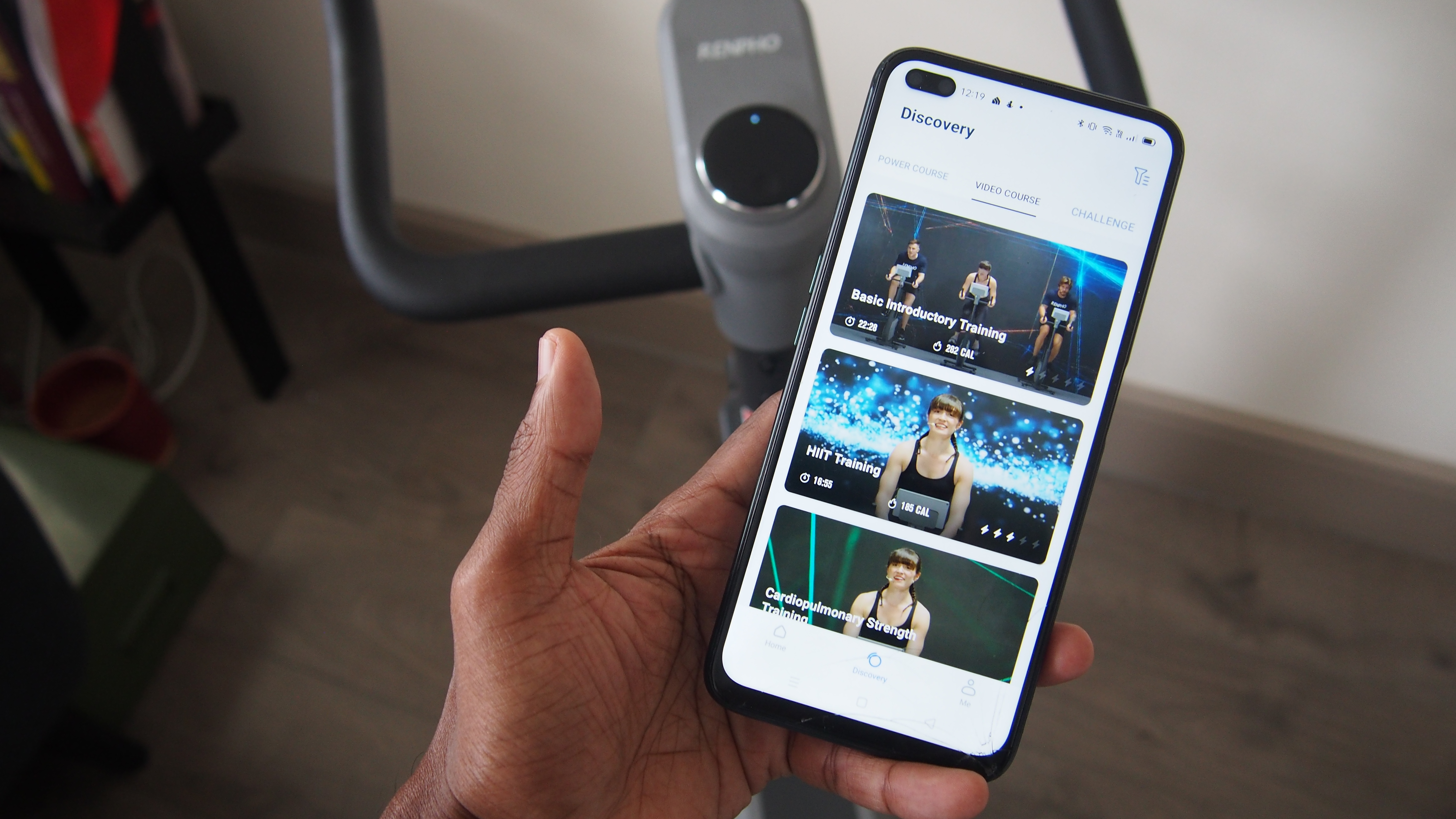
From the home screen, you can see the option to go for a free cycle, view recent training or perform the Cycling Power Test to produce your functional threshold power (or FTP) to better tailor training programs to each user. This is really the whole AI element of the experience here.
You can also browse what the app calls 'video' and 'power' courses, with the former offering instructor-style workouts where the resistance is automatically adjusted for you based on the session. An annoying aspect of these video workouts is that you’ll need to download them individually as opposed to stream and the size of the files are big and will sap up a lot of your device space.
The power courses offer sessions geared on targeting different power ranges, and are engineered for those looking for more serious cycling-style training. If you don’t fancy listening to the pretty uninspiring audio, you can simply mute it and play your own music from a streaming service like Spotify no problem.
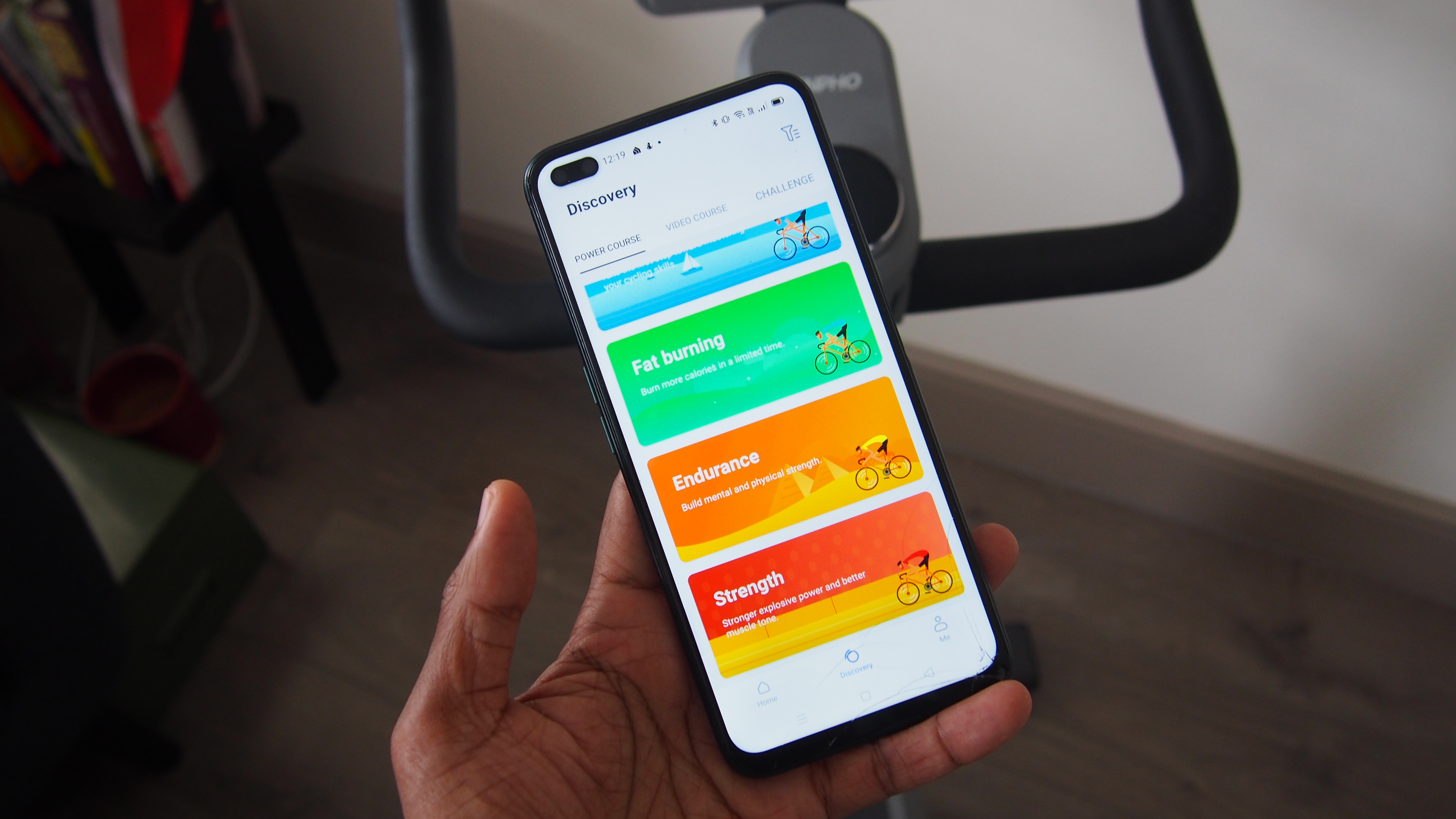
In addition to the power and video courses, you can also make use of the Challenges, which are essentially scenic rides that are definitely best enjoyed on a tablet as opposed to a phone screen.
Outside of the AI Gym app, there’s quite a nice array of third party apps that this bike is compatible with. That includes Zwift, Peloton (iOS only), Sufferfest and KinoMap. So for Zwift, for example, you can make use of the automatic resistance support, which makes it an affordable bike option to pair up with the popular training app.
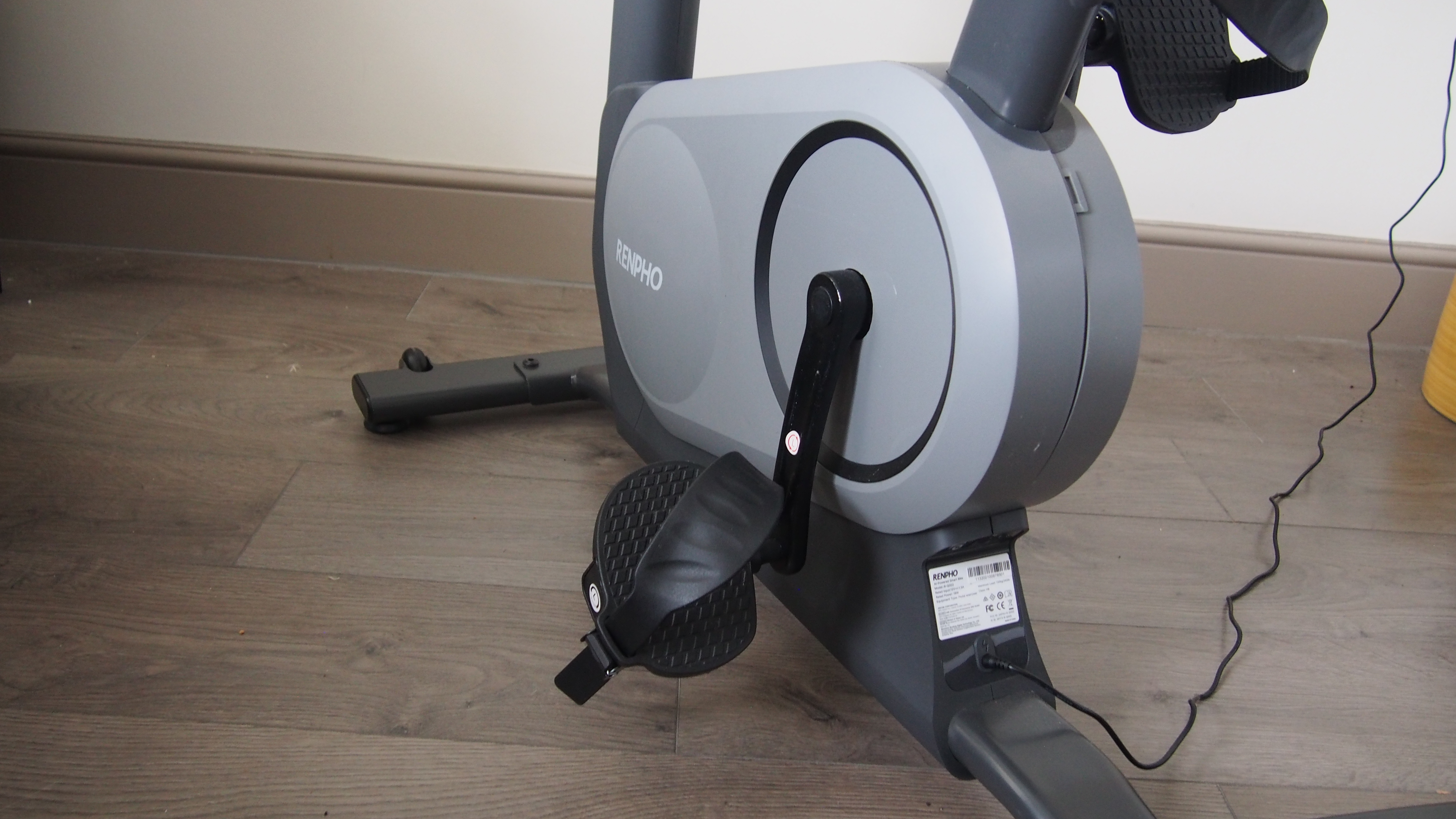
In terms of the riding experience, we’d say it’s solid on the whole. We tried a host of the power and video-style workouts along with some of the scenic rides and the power rides definitely stood out most in terms of providing really challenging and tough workouts and really helping us work up a sweat. You’ll get the same from the instructor-led sessions, but these certainly lack some of the presentation gloss you get from similar style classes on a Peloton, NordicTrack or Echelon smart bike.
You do have the option here to pair up ANT+ heart rate monitors, and it’s Apple Watch-friendly too, which does mean on top of those core cycling metrics, you can better measure effort levels here.
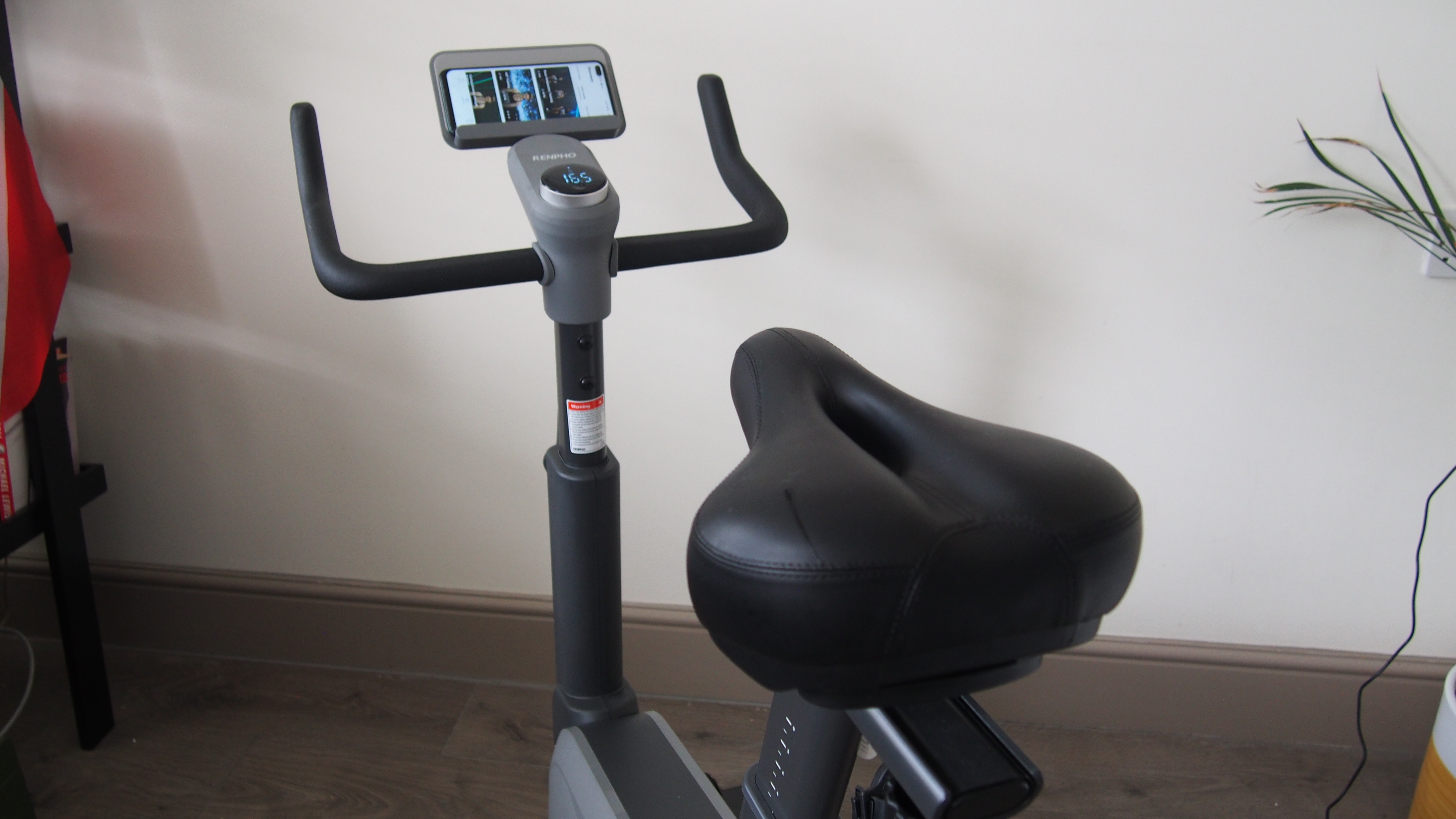
Getting into the saddle is comfortable on the whole though as mentioned, we did need to make adjustments to the handlebar height to make sure our legs didn’t hit it. The pedals don’t feel like the best quality you’ll find on an indoor bike, but thankfully you can swap them out for better quality ones too.
The handle bar offers two ways of gripping, but it definitely feels more natural opting for the racing-style grip. The most disappointing aspect is the lack of any sort of drinks holder here, which meant propping up a bottle nearby to reach for during sessions.
Renpho says there are 70+ classes and four training courses, which should be enough for beginner riders to get going, but it’s unclear how much the classes and training libraries get updated. That’s why it’s such a big plus to have access to those third party apps, even if it does mean that you might have to spend a little more to use them. There’s enough here to challenge experienced and inexperienced riders, but it definitely feels like a bike geared towards people delving into the indoor bike world for the first time.
Buy it if
Space is a premium
The Renpho AI Smart bike doesn’t soak up floor space like other connected bikes, making it ideal for those who don’t have a dedicated pain cave.
You don’t want to spend big on a subscription
Unlike a Peloton, Echelon or NordicTrack bike, there’s no extra money to pay to make best use of the bike with the option to pair to other apps if you want.
You're an indoor bike beginner
It’s nice and easy to set up and offers a good range of workouts that don’t feel hugely daunting to use.
Don't buy it if
You want a slick Peloton-style experience
While there are some instructor-led workouts, Renpho’s approach is a far more basic affair, and lacks the slickness of a Peloton or Echelon bike.
You’re a sucker for a good-looking indoor bike
The Renpho AI Smart bike isn't the prettiest, so if you’re about style and substance, then you might feel a little disappointed by what you unbox.
- We've tested and ranked the best electric bikes
0 comments:
Post a Comment